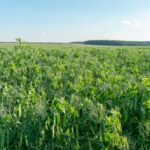A greenhouse is an essential tool for gardeners and farmers looking to extend their growing season, improve crop yield, and create an optimal environment for plants. It offers a controlled environment that shields plants from harsh weather conditions, pests, and diseases, providing an ideal space for growing a wide range of plants. Whether you are a seasoned gardener or just starting, understanding the benefits and the tools needed to set up a greenhouse can enhance your gardening experience.
Benefits of Using a Greenhouse
- Extended Growing Season
A greenhouse allows you to grow plants year-round by protecting them from the elements. In colder climates, it can help you grow plants during winter, while in warmer climates, it can provide a cool environment for plants that require more temperate conditions. This extends the growing season, allowing for multiple harvests. - Optimal Temperature Control
Greenhouses trap heat from the sun, creating a warmer environment for plants. With temperature regulation, it ensures that plants stay within their ideal growing temperature, reducing the risk of frost damage or heat stress. Some greenhouses also come with heating and cooling systems to maintain a consistent climate. - Protection from Pests and Diseases
The enclosed structure of a greenhouse acts as a barrier against pests such as insects and rodents. It also helps to minimize exposure to diseases that can spread through the soil or airborne spores. This creates a cleaner, safer environment for plants, which can reduce the need for chemical pesticides. - Improved Crop Yield
With a controlled environment, plants can grow healthier and more efficiently. Greenhouses offer protection against environmental stressors, and the ability to regulate light, humidity, and temperature ensures that plants receive optimal growing conditions. This can lead to higher yields and better-quality produce. - Water Conservation
Greenhouses often use systems like drip irrigation that deliver water directly to the plant’s roots. This reduces water waste and ensures that plants receive the right amount of hydration. Additionally, the enclosed space reduces evaporation, which makes water usage more efficient.
Tools and Setup Essentials for a Greenhouse
To make the most of your greenhouse, you’ll need to invest in some essential tools and equipment to ensure optimal growing conditions for your plants.
- Greenhouse Structure
The first essential piece is the greenhouse frame itself. It can be made from metal, PVC, or wood, with clear plastic or glass panels for the walls and roof. The frame needs to be sturdy enough to withstand wind and weather, while the panels allow for adequate sunlight penetration. - Temperature Control Systems
A thermostat or automatic ventilation system helps regulate temperature and humidity levels inside the greenhouse. You can also consider adding fans for air circulation, heating systems for colder climates, and shade cloths to reduce excessive heat during the summer months. - Irrigation System
An efficient irrigation system, such as drip irrigation or a soaker hose, is crucial for ensuring your plants get the right amount of water. These systems reduce water waste by delivering water directly to the plant roots and can be automated to save time. - Shelving and Plant Support
To make the most of the space in your greenhouse, use shelves, racks, or hanging baskets to maximize vertical space. Plant supports, such as trellises or stakes, are essential for vining plants like tomatoes and cucumbers, providing them with the support they need to grow upwards. - Tools for Maintenance
Basic gardening tools such as pruners, hoes, and shovels are necessary for maintaining plants and the greenhouse itself. A small rake for clearing debris and a hoe for weed control will keep the area tidy. Additionally, gloves and knee pads make it more comfortable to work inside your greenhouse. - Grow Lights
If your greenhouse is located in an area with less sunlight or during the winter months, supplementing with grow lights can help provide the necessary light for plant growth. LED grow lights are energy-efficient and can be used to mimic the light spectrum that plants need for photosynthesis. - Planting Trays and Pots
Starting seeds in trays or small pots inside the greenhouse can give your plants a good head start before transplanting them into the ground or larger containers. Ensure that the trays have drainage holes to prevent waterlogging and root rot. - Soil and Fertilizers
The right soil mix is essential for plant health. Depending on the type of plants you are growing, you may need specific soil blends, such as well-draining potting mix for flowers or a richer soil for vegetables. Organic fertilizers and compost can provide essential nutrients for healthy plant growth.
A greenhouse is an excellent investment for gardeners and farmers looking to boost their plant growth, increase yields, and protect plants from unfavorable environmental conditions. By setting up the right tools and equipment, you can create a productive and sustainable growing environment for a variety of crops. From temperature control systems to efficient irrigation solutions, a well-equipped greenhouse offers the ideal setting for your gardening success.
Join 'Farmers Mag' WhatsApp Channel
Get the latest Farming news and tips delivered straight to your WhatsApp
CLICK HERE TO JOIN






